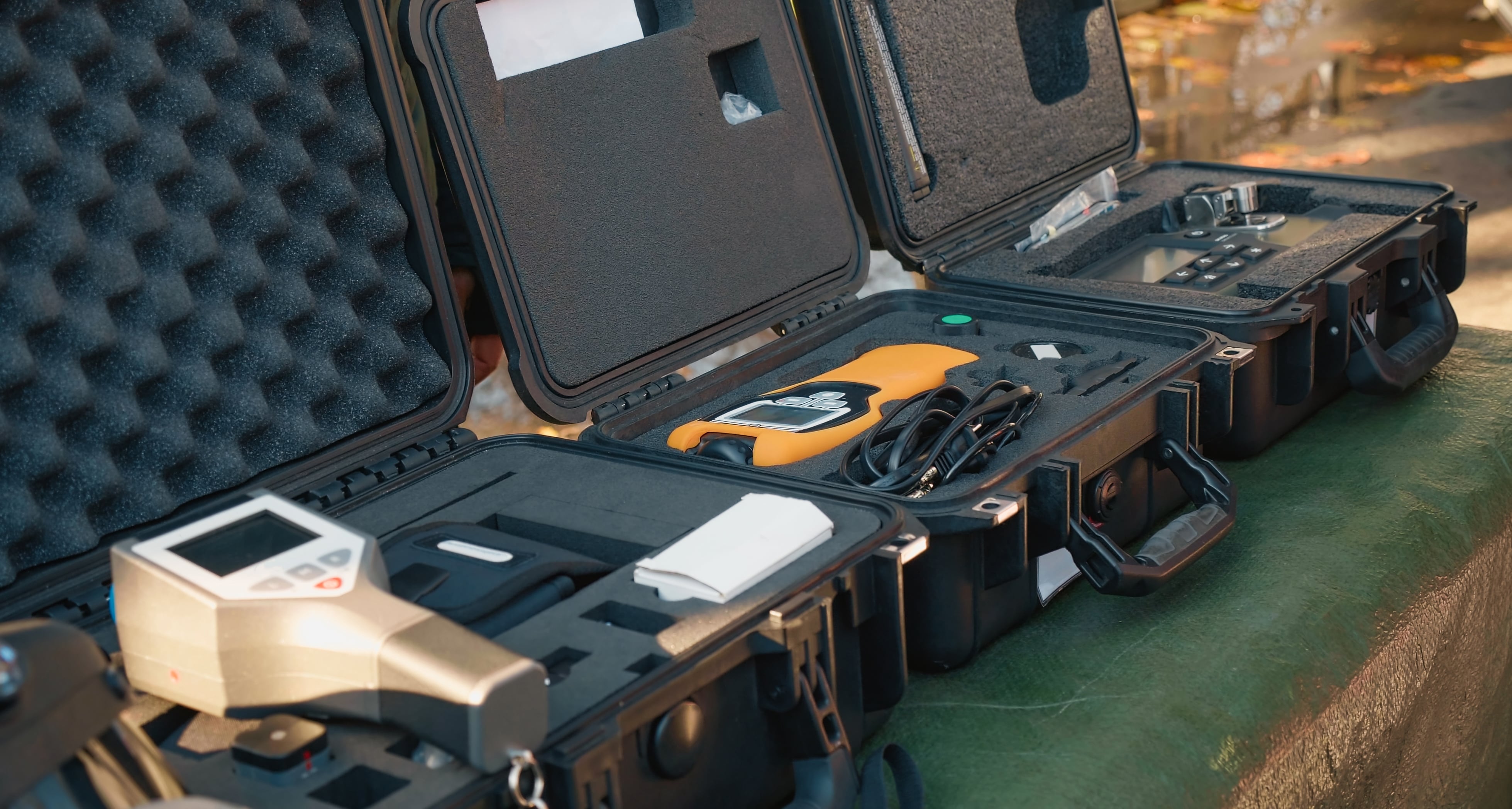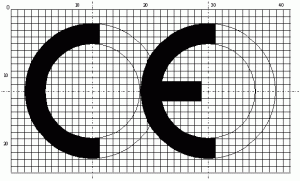Instrument Directive correctly applied: These requirements result for your CE-compliant product
The Measuring Instruments Directive 2014/32/EU regulates the properties of measuring instruments such as water meters, gas meters, active electricity meters, etc. Find out which requirements for conformity assessment result from the Measuring Instruments Directive. In the European market, measuring instruments must meet certain requirements and be duly registered. The proof that the device complies with the regulations is the CE marking, the main obligation lies with the manufacturer or importer.
The experts at easyCE will be happy to assist you in placing your product on the market in the EEA and in assessing special cases. We support you with CE, UKCA and other markings.

Declaration of conformity done!
Receive your CE declaration of conformity ready for signature.
Risk assessment completed!
CE mandatory risk analysis conducted.
Relevant directives & standards applied!
Your product evaluated against relevant directives and standards.
Technical documentation created!
Receive a pragmatic, user-friendly operating manual.
CE mark attached!
Simply affix the CE mark and you're done.
FAQ
How do you get CE certification for your meter?
After the design, development and manufacture of a measuring instrument has been completed and before the market launch in the European Union, a CE marking is required. The CE marking indicates that the device meets all legal
requirements, starting with Directive 2014/32/EU. The production process and quality management system must be documented, and the documentation must be reviewed and accessible to consumers. If the CE mark is affixed, the device can be legally placed on the European market.
Which measuring instruments are covered by the directive?
The following instruments fall within the scope of this Directive:
- Water meters
- Gas meters and volume measurements,
- Conversion devices,
- Active electricity meters,
- Heat meters
- Measuring systems for continuous and dynamic measurement of liquid quantities, other than water,
- Automatic scales,
- Taximeter
- Material measure,
- Dimensional measuring instruments
- Exhaust measures,
- Measurement analyzers.
Which measuring instruments are not covered by the directive?
The following areas are not covered by the directive:
- Liquid dimensions,
- Measuring container,
- Tanks for milk refrigerators,
- Moisture meters for grain and oily grains,
- Level indicators,
- Alcohol meters and hydrometers for alcohol and metric alcohol tables,
- Automatic sugar beet saccharimeter supplied to refineries and distilleries,
- Refractometer for measuring the sugar content of grape must,
- Alcohol tester
- Radar speed detectors,
- Instruments for measuring turbidity of emissions from vehicles with diesel engines,
- Pressure gauges for inflating car tires,
- Sound level meter, and
- Thermometers used by state authorities to measure the temperature of perishable food.
How can the requirements of the Directive be met?
1. Checking the conformity of the instruments. Measuring instruments must provide a high level of metrological protection and be designed and manufactured to a high level of quality. The manufacturer must perform appropriate conformity assessments to ensure the safety and quality of the device. The manufacturer must declare that he complies with the directive.
2. Determine which laboratory tests may be required. Many instruments can be tested directly by the manufacturer, but all high-risk instruments require laboratory testing. A notified body shall be engaged to verify its conformity. It examines, checks and certifies the conformity of the technical design of the device. Appropriate tests or relevant technical specifications laid down in the harmonized standards shall be carried out. The notified body shall carry out the required conformity assessment procedures and certify the quality of the product and its compliance with the Directive.
What is the content of the technical documents?
The Directive requires the manufacturer to produce technical documentation. The technical documentation shall help to assess the compatibility of the application used with the requirements of the Directive. The documentation should describe the design, manufacturing process and operation of the instrument in such a comprehensive and detailed manner that it is possible to assess its conformity with the applicable requirements of this Directive.
The technical document must contain the following points:
- The name and address of the manufacturer,
- Detailed description of the device and/or its serial number, with drawings, diagrams and general information about the software,
- A list of fully or partially applied harmonized standards and/or normative documents,
- Risk assessment of components, building materials and subassemblies,
- Reference, where appropriate, to the specifications with which conformity can be declared,
- Application of compliance standards and procedures,
- Production or manufacturing process and documents,
- Photographs of the device from different angles,
- Authentic details of the signatory,
- The last two digits of the year in which the CE marking was affixed
What does the notified body do?
The notified body is an independent qualified and approved organization selected and mandated by the manufacturer to assist it in meeting the requirements of the Directive and to confirm compliance with the requirements.
A notified body shall carry out calibration, testing, audit, inspection and certification activities specified in the conformity assessment procedures where third party certification is required. Notified bodies shall be designated by the designated authorities (the competent ministries) in accordance with the applicable directives and notified to the Europ
A notified body may provide conformity assessment services within Europe or in third countries. It must provide information to the notification authority and the supervisory authorities and carry out its activities impartially, independently and competently. As proof of their competence, they should have a corresponding accreditation.
The notified body shall issue a Certificate of Conformity for each approved device for the tests and tests carried out and shall affix its identification number as part of the CE mark.
What are the contents of a certificate of conformity?
The structure and content of the certificate of conformity are basically the same for all directives but may differ slightly with regarding to this directive. The following information is required:
- The name and address of the manufacturer,
- Description of the device and/or its serial number,
- Reference to relevant harmonized standards,
- Reference, where appropriate, to the specifications with which conformity can be declared,
- Authentic details of the signatory,
- The last two digits of the year of affixing the CE marking.
The list of technical documents (see above) can be used to meet this requirement.
What are the modules CE certificate and conformity assessment?
The conformity assessment modules cover both the planning and production phases. While some cover only one phase, others can cover both.
The conformity assessment modules consist of 8 main categories:
- Module A, A1, A2 - Internal production control
- Module B - EU type examination
- Module C, C1, C2 - conformity with the EU type based on internal production control
- Module D, D1 - Conformity with the EU-supported quality assurance of the production process.
- Module E, E1 - Conformity with the EU type supported product quality assurance.
- Module F, F1 - Testing of conformity with the EU type of supported products
- Module G - Conformity based on an individual test
- Module H, H1 - Compliance supports comprehensive quality assurance.
How is the CE marking applied to the product?
The CE marking must be in the form shown below. The letters should be the same size and not fall below a height of 5 millimeters.
The proportions must be adhered to, even if the size is changed.
The CE marking must be clearly visible, legible and permanently affixed to the device or its data label. However, if this is not possible or not guaranteed due to the nature of the device, it must be attached to the packaging (if available) and the accompanying documents.

What enforcement provisions and sanctions apply to the directive?
Each EU Member State lays down the rules for enforcement and sanctions for non-compliance with the Measuring Instruments Directive. Below is a summary of the sanctions for Germany as an example. For sanctions that apply in other EU Member States, please consult the local product safety legislation of each country.
Germany - a violation of the Product Safety Act can be punished with fines of 3,000 to 30,000 € (§ 19) and imprisonment of up to one year (§ 20).
Get CE-marking done in 3 simple steps
Step 1
Request expert opinion
Ask for our expert opinion free of charge and find out what is necessary for the CE marking of your product. Be prepared to describe your product in broad terms.
Step 2
Receive our offer
If your product is subject to CE marking, we offer you our support with the CE marking and all accompanying measures. We will be happy to explain necessary steps on the phone.
Step 3
We get it done
When you place an order, you will be assigned your own personal CE expert who will carry out your CE marking and accompany you throughout the entire process. Your expert will also be at your side after the CE marking has been successfully completed.
Get CE-marking done, worry-free
Trust the experts of product safety and conformity


Willy Lebherz - Founder and Managing Director of easyCE
- Expert in product safety and conformity since 1995
- Recipient of the "Medal of the Order of Merit of the Federal Republic of Germany", awarded in 1983 by the then Federal President Carl Carstens
- Master of measurement and control technology
- Captain (ret.), Project Officer for Technical Logistics in the Army Material Office and Chief of the Telecommunications Repair Company
easyCE is a digital, dynamic engineering office with a focus on product safety and product conformity - especially CE-marking. We support manufacturers, operators and dealers in designing products safely and offering them on the market in compliance. We are a "full-service provider" and can take over the entire conformity assessment process for you if you wish. To do this, we support you in carrying out risk assessments, researching standards, product analyses, developing suitable safety precautions, preparing user-friendly technical documentation, coordinating tests and all other accompanying measures. easyCE was founded in southern Germany, but is now active globally.
We know what you need to do to get CE-marking done, worry-free.
